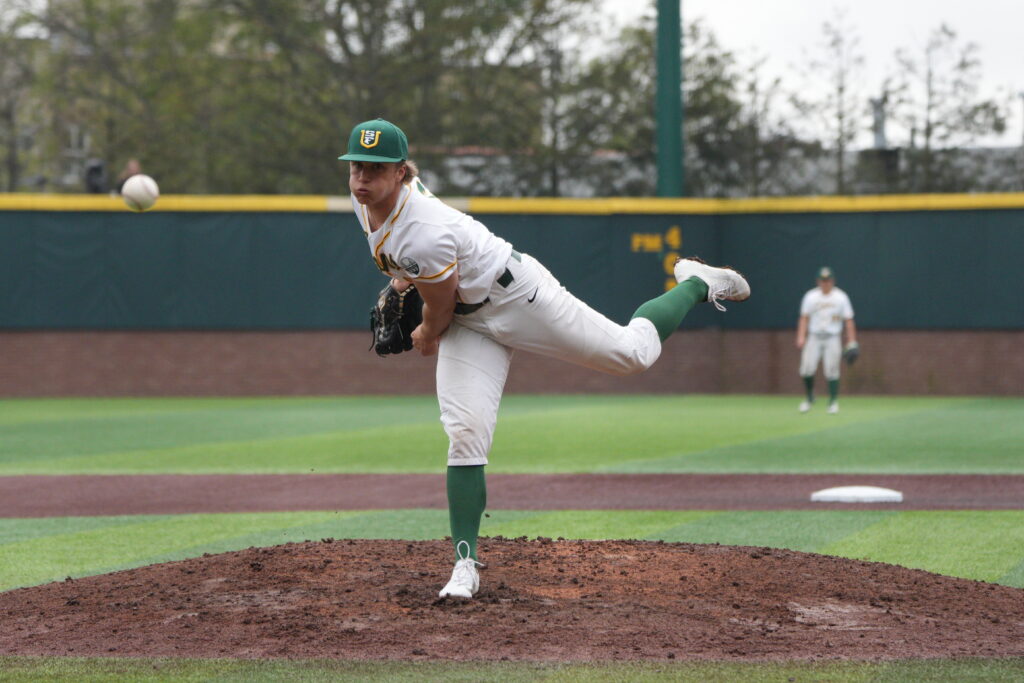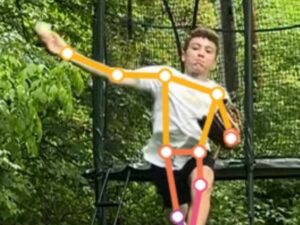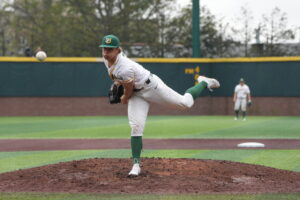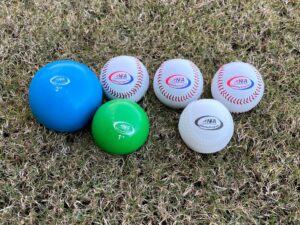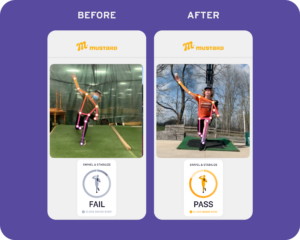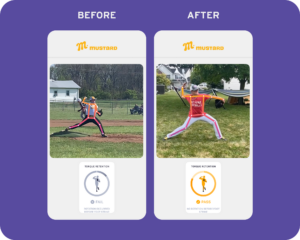By Tom House, PhD, with Lindsay Berra
It seems every pitcher out there, no matter the age, is always chasing velocity. But, I think they should be chasing perfect pitching mechanics, or at least the most efficient pitching mechanics they can muster, because mechanical efficiency leads to increased velocity. All velocity comes from torque, which is stored energy. The vast majority of velocity – up to 80% – comes from hip and shoulder separation, which is angular torque. The final 20% of velocity comes from stack & track, which is linear torque. In a perfect world, that 80% and 20% would equal 100% of your velocity. But, a pitcher’s mechanical efficiency and kinematic sequencing determine how much of the ground force he or she produces will transfer up the body and into the baseball, and no one is able to translate 100% of that energy. Even Hall of Famer Greg Maddux, who had the most efficient mechanics of any pitcher we ever measured, was only 97% efficient. Of all the hard throwers, Nolan Ryan was the best at 96%.
It’s All About Ground Force Production
We say timing and stride length are the two most important mechanical variables in the pitching delivery, because this is how you produce the ground force that will travel up your body and into the baseball to produce velocity. If a pitcher can get into foot strike in one second or less, he or she will land on flat ground with four times bodyweight, in foot pounds of energy. On a mound, he or she will land with six times body weight. So, for example, let’s look at the 6-0, 200-pound Maddux. If he strides six of his own feet down the mound and lands in one second or less, he’ll land with 1,200 foot pounds of energy that could go into the baseball. If he strides seven of his own feet down the mound, he’ll add an extra 200 foot pounds of energy. But, after foot strike, a pitcher’s ability to transfer those foot pounds of energy up his body and into the baseball for optimal velocity is dependent on the efficiency of his or her kinematic sequencing and mechanics and his or her functional strength.
Up to 80% of Velocity Comes from Hip & Shoulder Separation
Torque is a measure of stored energy; in this case, the energy created as a pitcher moves down the mound into foot strike. Hip and shoulder separation – measured in the Mustard app as Torque Retention – increases the capacity for the body to rotate to create torque during the pitching delivery. That rotational component is initiated first with the hips and shoulders, then with the external rotation of the forearm. You wind it up as tight and as far as you can, and store that energy until the last possible second when it explodes to deliver the energy into the arm and the baseball. The greater the dissociation of the hips and shoulders, and the longer you hang onto that torque, the harder you throw easily. If a pitcher can get 40 to 60 degrees of hip and shoulder separation, he or she can get up to 80% of potential velocity from the torso.
The Other 20% of Velocity Comes from Stack & Track
Stack & Track involves linear torque. When a pitcher’s shoulders and chest square to home plate, the low back is in hyperextension. That means the back is arched, the butt is stuck out a bit and the pelvis is tilted anteriorly. The shoulders and chest should remain square to home plate for the rest of the distance traveled by the center of gravity (think: belly button), at which point, the lower back snaps forward from hyperextension into flexion. That linear torque delivers the arm, which will go from laid back in external rotation to internal rotation as the ball is released, and delivers whatever is left in foot pounds of energy toward the target and home plate, like the cracking of a whip.
Velocity is All About Vector Management
A pitcher wants all of his or her energy going in the same direction during the pitching delivery. Any deviations from that path detract from velocity. For example, we know from a review of cadaver studies that the human head weighs about 7% of body weight, relative to anyone’s build. Each arm weighs around 3.5% and each leg weighs around 20%. (Of course, this can vary by individual body type so it’s not perfect, but it’s consistently imperfect, and we can therefore draw statistical validity from it.) If all of a pitcher’s vectors line up perfectly or close to perfectly, and mechanics are efficient, all of that mass is moving straight down the mound towards home plate, and contributing to velocity. But, if a 200-pound pitcher’s head, which weighs around 14 pounds, moves 16 degrees off of vertical, that inappropriate movement is going to make it feel like the arm weighs 28 pounds and it’s pulling that pitcher in the wrong direction. If you’re a 200-pound, right-handed pitcher and your front-side arm is flying open, you have your 7-pound arm plus your 1-pound glove flying outside the width of your torso. So that’s eight pounds of energy going in the wrong direction and not going into the baseball, reducing velocity. Instead, you want to Swivel & Stabilize with the glove and work against that glove to keep all the energy moving straight into the baseball.
Functional Strength Matters
Being functionally strong means you’re only as strong as your weakest link. If you have the capacity to throw 100 miles an hour, but you’ve got weak decelerator muscles on the back side of your body, you might only be able to decelerate 92 miles an hour. So you won’t hit 100 because you’re not going to throw any harder than your functional strength will allow. This is especially important for young pitchers, because not all kids develop at that same rate. Often, your hardest-throwing Little League pitcher will have arm speed at the expense of arm strength, and that can lead to loose shoulder or growth plate issues. So, with youth athletes, not only do you have to ensure there is enough functional strength to support velocity, but you also have to make sure that pitching mechanics and functional strength match up to the window of trainability. Until testosterone or estrogen kick in, it doesn’t do Little Leaguers any good to lift heavy weights. They have to do bodyweight work focusing on the movements relative to what they’re asking out of their arms. And at this point, it’s not even skill work yet. Until a player matures and nerves and muscles can effectively talk to each other, you can’t efficiently measure skill. This is why the baseball medical community tries to moderate those inefficiencies with recommended pitch counts.
If you’d like more great content from Mustard, and you’d like to evaluate and improve your own pitching mechanics, download the Mustard pitching app today.

